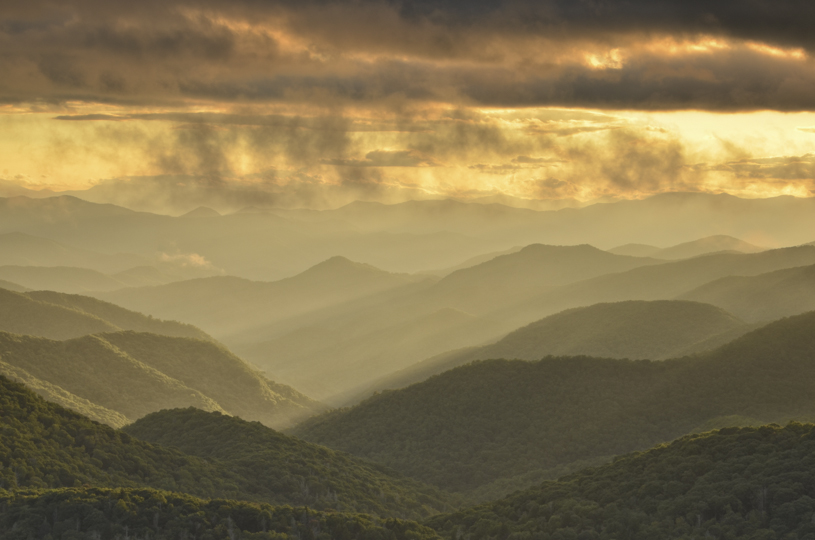The answer to last week’s puzzler is a MINK.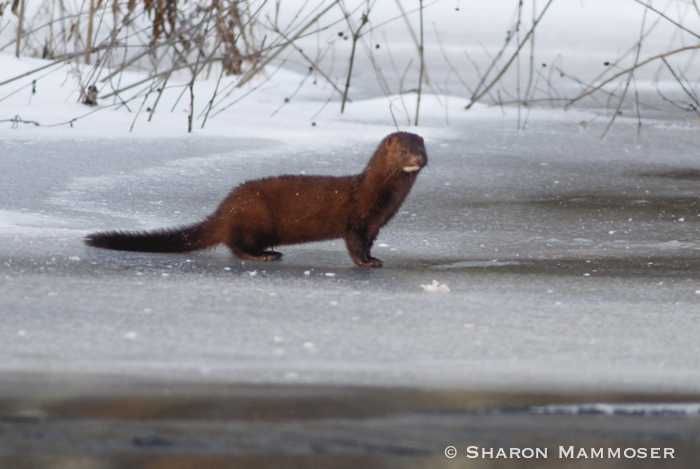
Have you ever been lucky enough to spot this animal? Some people thought it was an otter–were you one of them? It’s an easy mistake to make, as both animals belong to the weasel family, are found beside rivers and have brown fur and long tails. Mink however have the characteristic white patch of fur under their chines that is missing in otters. However, if you see a mink from a distance, this patch might not be obvious.
You can read more about otters here, in a post I wrote a number of years ago.
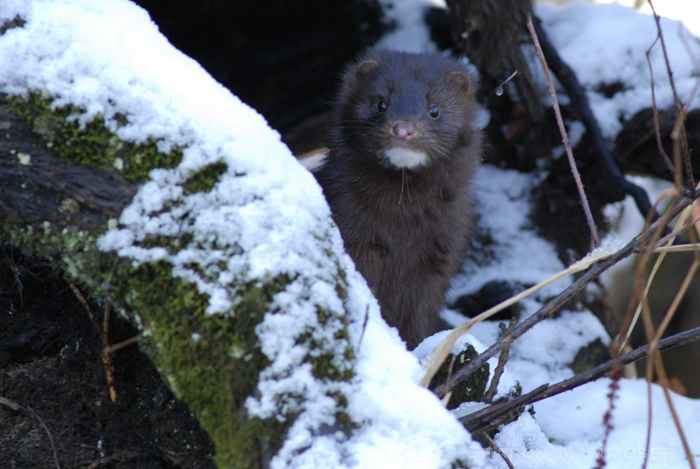
When I lived in New York I saw mink often, especially in winter. It was not unusual to see them at any time of the day and they seemed especially inquisitive.
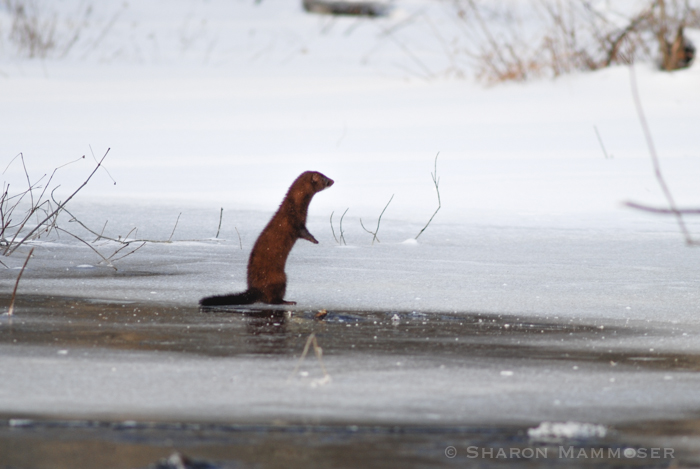
My favorite encounter was a day when I was in a canoe, alone, and saw one swimming ahead of me. I was in the habit of having my tripod and camera in front of me in the canoe, between my knees to hold it steady. I would paddle around it carefully, alternatively paddling to get somewhere and then setting the paddle down to watch or take photos. In this case, I paddled hard towards the mink. He (or she) got out of the water at a tree trunk and hid around the back. I waited. And soon enough, he peeked out, checking if I was still there. I snapped some photos. Then he jumped back in the water and swam on. I paddled, following him. Again, he got out by a tree trunk, hid for a moment around back, and then peeked out to see if I was still there.
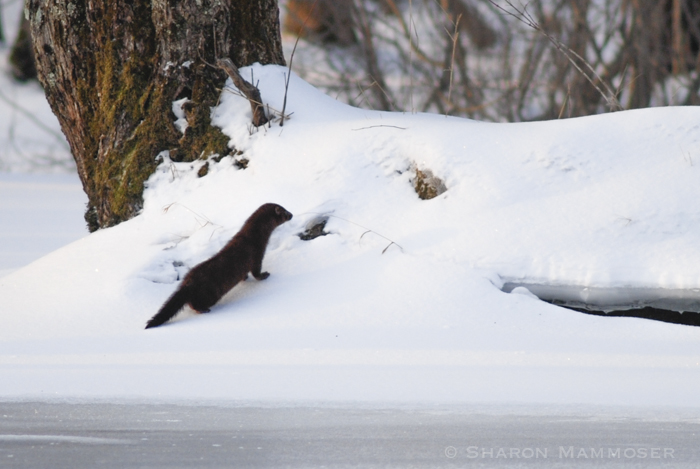
This exciting game of hide and seek continued for a few minutes and I was never really very close to him, but it was fun to watch him and see what he would do. With my zoom lens, I managed to get a few decent photos. I was lucky I was good at paddling and getting exactly where I wanted to go. It was–and is–always a thrill to see a wild animal in its habitat for any length of time.
Like otters, mink are just as comfortable in the water as they are on land. Their bodies are well-adapted to both. Their soft fur is usually black or dark brown and is covered with an oily substance that acts like a rain coat, keeping them warm and dry. They have a long tail that helps them steer when swimming, as well as webbed feet. They eat a variety of foods including, fish, crayfish, frogs, salamanders, worms, birds and even small mammals.
Mink are mammals that belong to the weasel family. They can reach 15-28 inches in length and weigh about 16-56 ounces. In the wild their lifespan is only 3-4 years. They are hunted and eaten by foxes, coyotes, hawks, owls, lynx, bobcats and people.
Mink are considered nocturnal, but it always seemed to me from personal observation of them that they, at least in winter, could be active at all times of the day, with peak activity being in the morning or evening.
Check out next week’s puzzler–another about a mammal.

